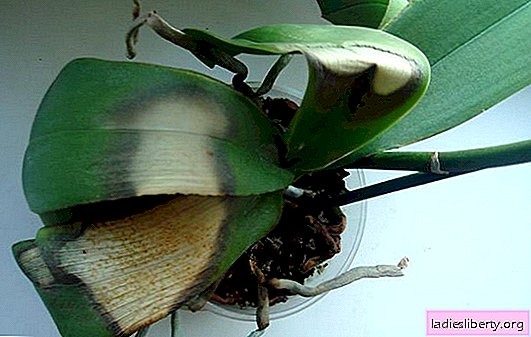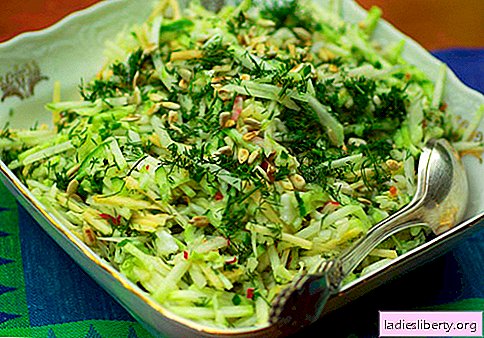
Orchid is quite picky and moody flower, requiring delicate handling, proper cultivation and care.
The main factors influencing its condition are lighting, watering, temperature and humidity level in the room, air circulation, the use of suitable soil, pots and fertilizers.

Only under all conditions, an individual approach to the plant, it adapts well to the environment, begins to grow and delight with its flowering.

Orchid withered: why?
This problem occurs mainly in inexperienced orchid lovers. This can happen for several reasons:
1. Improper care.
2. Exposure to pests, flower disease.
Improper care
It is possible to understand that the orchid dries out due to care and maintenance errors by the appearance of the plant: the leaves and stem become sluggish, turn yellow and begin to die gradually. To resuscitate a flower, first you need to find out the cause that led to the disastrous process.
• overheat
If the orchid was exposed to direct sunlight for a long time, or at high temperatures, it stopped receiving the required amount of water. This led to hypothermia of the root system, wilting and yellowing of the foliage.
You can fix this by moving the flower to a cooler place. After a couple of hours, when the plant has completely cooled, watering and spraying should begin. The restoration of its vital activity will take a rather long period of time - it takes a couple of days to normalize the water balance.
To prevent drying of the orchid, you need to try to prevent overheating, change the location of the plant or, at least, create a semblance of a canopy with a light-protective device;
• wrong watering
If humidity conditions are not observed, the roots of the flower first of all suffer, then the deciduous cover withers, and the leaves gradually fall.
Uncontrolled irrigation leads to rotting of the root system, so you need to water the plant only when the earthen lump is sufficiently dry. The lack of moisture leads to drying of the orchid, the death of the root system.
There is no specific regime for irrigation - you often need to pay attention to the condition of the substrate, room temperature, humidity and lighting. Temporary breaks between watering will alternate depending on these factors;
• mix state
One of the reasons for the drying of an orchid can be an old substrate. For normal plant life, you need a high level of breathability, water permeability and a good substrate composition. Therefore, it is necessary to monitor the quality of the land mixture and periodically change it;
• fertilizer concentration
A high concentration of feeding substances can lead to a flaccid, crumbling leaf cover. The roots in this case become thin and dried, yellow, red or black.
With minor damage, you need to remove the affected roots and leaves, for some time to keep the flower in partial shade, pouring water and avoiding direct sunlight.
Exposure to pests, flower disease
To prevent the drying of the orchid, to prevent its death, you need to know the main harmful insects that can appear on a plant or soil.
• Shield
Shchitovka is the main enemy of the orchid. It has a tiny size, is easily transferred from flower to flower, located on deciduous cover and in pseudobulbs.

The main danger is that scale insects suck out the flower’s juices, thereby slowing its growth. You can recognize them by dark spots, like hills, tubercles.
To save the orchid from drying out and dying, you need to wash it in the shower, remove all parasites and spray all parts with an insecticidal agent. The recovered plant can be transplanted into a fresh substrate, washed with water every week for prevention;

• Aphid
Aphids prevail over those flowers that lack moisture and fertilizer. Her favorite place is young leaves and sprouts. In addition to the fact that aphids suck juice from a plant, it launches toxic substances, which ultimately lead to its immediate death.

To treat a flower from aphids, first of all, it must be thoroughly washed and all damaged buds removed. A soap solution consisting of a tablespoon of grated laundry soap and a liter of water will help remove pests. It has the properties of an antiseptic, which is detrimental to most insects;
• Mealybug
A mealybug can also cause the orchid to dry. His presence can be guessed from the whitish coating on the roots, the earthen mixture or the walls of the pot. It appears due to the lack of good conditions, especially when the plant is overfed with nitrogen fertilizer.

To overcome the pest and prevent its occurrence again, every morning and every evening you need to remove mealybugs from the orchid with a thin stick. After thoroughly cleaning the flower, treat it with a swab moistened with soapy water.
• Nematode
These transparent whitish worms can be located both in the ground, substrate, and on the flower itself. The tissues of the damaged area blacken from exposure, can die out.

A diseased plant must be immediately isolated from all others to prevent the spread of insects to other flowers. It is treated with nematicides: fenamiphos, aldicarb, oxamyl or etoprofos. All drugs are absolutely safe for plants, but toxic to humans and animals, so you need to use them with safety precautions.
The orchid has dried up: what to do - if the reasons are not established
If the orchid has dried up, and the reasons could not be established, you need to pay attention to its appearance.
Malicious insects can settle both in the substrate and on the orchid itself. To exclude the likelihood of pests, you need to carefully examine the earthen mixture, roots, leaves, flowers of the plant.
The best way to control insects is to prevent their spread. It includes a careful inspection of the flower before buying, "bathing" in a shower with warm water, the use of sterile soil, the exact observance of the instructions when using chemical protective equipment.
If the flower withers and withers, the leaves turn yellow, and the roots become weaker, it means that a mistake was made during the care. In this case, you need to pay attention to the location of the plant, remember the time of the last watering and fertilizer, check the presence of drafts and air humidity.
Flabby leaves with points pressed on them indicate damage to the root system, dehydration of tissues. If mechanical damage to the sheet, cracks is noticed, then the reason lies in the excess of fertilizers and abundant watering.
Stagnant water, excessive accumulation of fluid can cause darkening or yellowing of the leaf, the formation of growths and cones on it. Overly long contact with water is indicated by dented spots and thinned tissues.
Like many indoor flowers, an orchid requires reverent treatment and regular care. Proper and timely help contributes to good life, growth and flowering of the plant.











